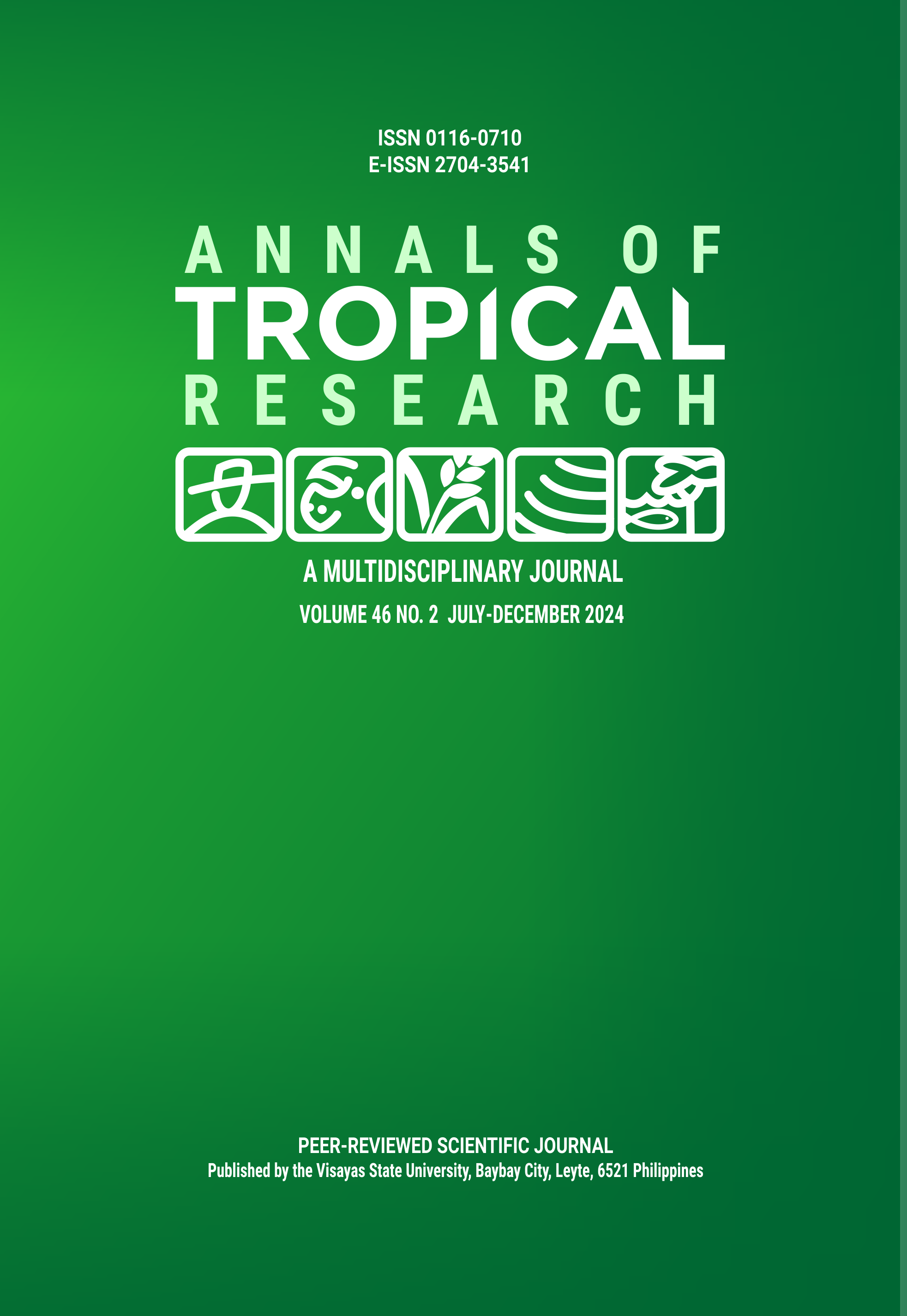Estimation of carbon stocks of mangrove forests along the Carigara Bay in Leyte, Philippines
DOI:
https://doi.org/10.32945/atr4624.2024Keywords:
Biomass, climate change mitigation, fringe, riverine, sequestrationAbstract
Mangrove forest ecosystems are known to sequester large quantities of carbon, becoming a significant carbon source when disturbed. This paper presents a quantification in aboveground (standing trees, palm, shrub, standing dead trees, downed wood and litter), belowground (root and soil) and ecosystem carbon stocks in mangrove forests along the Carigara Bay in Leyte, Philippines. The carbon stocks in the different mangrove forest types (fringe and riverine) and zones (landward, middleward, and seaward/along water) were compared. Further, the relationship between environmental factors (eg, interstitial soil salinity, soil water content and soil depth) and ecosystem carbon stocks was examined. The study yielded an ecosystem carbon stock of 558.02±51.13Mg ha¹, partitioned into aboveground and belowground carbon stocks of 251.96±31.08 and 306.06±28.50Mg ha, respectively. The ecosystem carbon stocks of the riverine (805.89±80.57Mg ha") greatly exceeded that of the fringe mangrove forests (310.15±24.59Mg ha). In general, biomass and soil both store a similar proportion of carbon, corresponding to 57% and 43%, respectively. In addition, regression analysis revealed that soil depth was a reasonable predictor of ecosystem carbon stocks, whereby increasing ecosystem carbon stocks were associated with deeper soil deposits. Overall, the study's results highlight the exceptionally high amount of carbon stored in the mangrove ecosystems, indicating their potential role in climate change mitigation.
Downloads
Submitted
Published
How to Cite
Issue
Section
License

This work is licensed under a Creative Commons Attribution-NonCommercial-NoDerivatives 4.0 International License.











